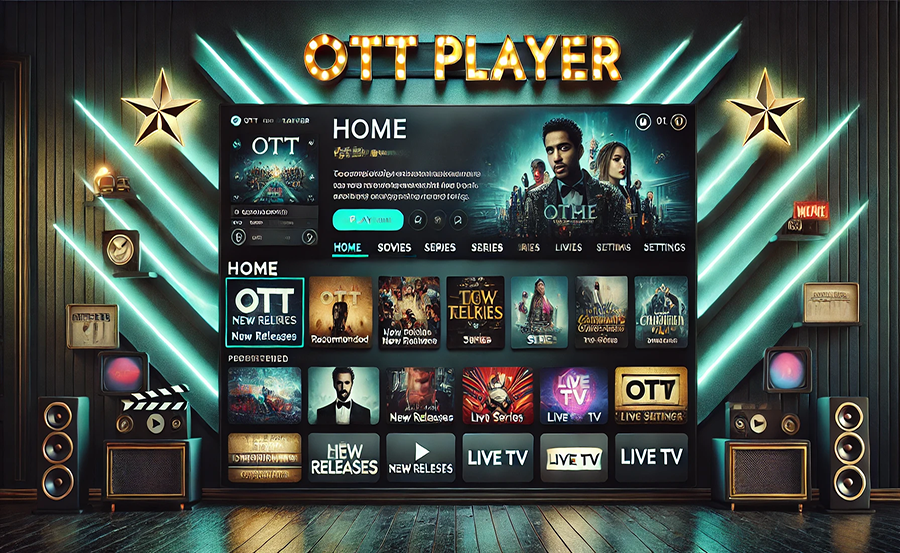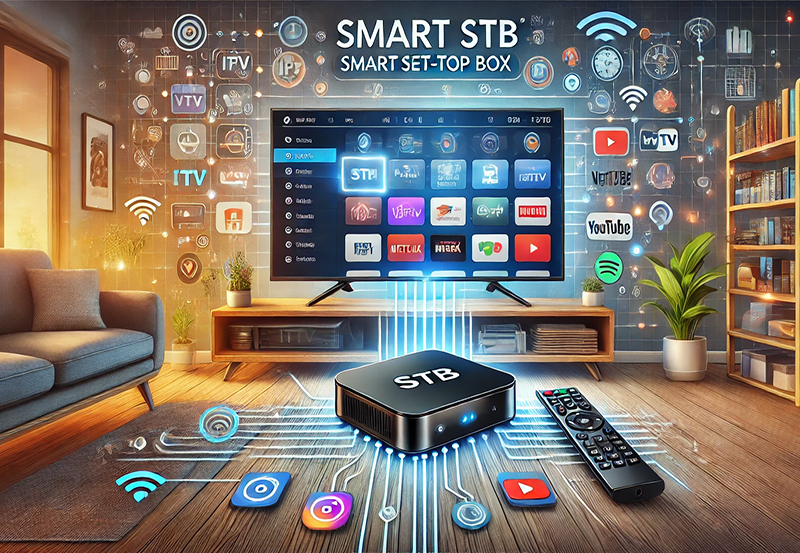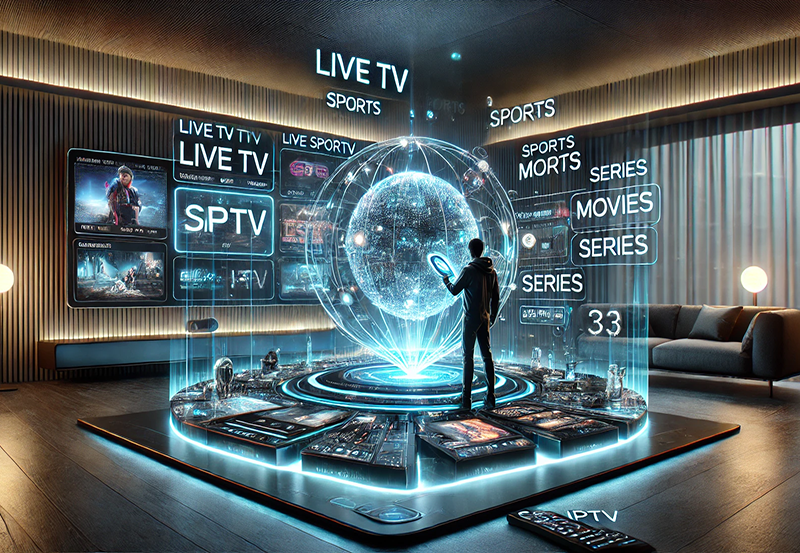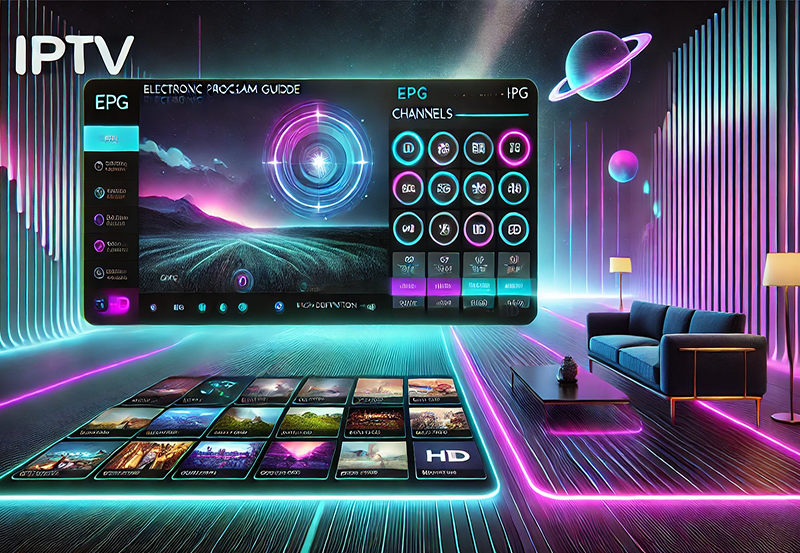The proliferation of Over-the-Top (OTT) streaming services has revolutionized how we consume media. With advancements in technology, viewing habits have shifted from traditional cable to more flexible, on-demand platforms. However, an aspect often overshadowed by this rapid innovation is accessibility— the ability for everyone, irrespective of physical abilities, to enjoy this digital content. In this detailed exploration, we’ll dive into how OTT players can be more inclusive and the role streaming services like DuplexIPTV are playing in this revolution.
The Evolution of OTT Platforms
OTT platforms have rapidly evolved from mere content distributors to major cultural phenomena. Initially, they provided an alternative to cable TV, offering the freedom to watch content anywhere and anytime. As technology advanced, so did user expectations. Hence, OTT players began integrating diverse features to captivate broad audiences.
With platforms like Netflix and Amazon Prime dominating the global market, technological innovations have become crucial. They now focus on high-definition streaming, personalized recommendations, and cross-device compatibility. But one question remains: are they doing enough for accessibility?
Expert Advice:
Access the best global content with IPTV service in Canada for unmatched variety and performance.
The Need for Accessibility in Streaming Services
While the convenience of OTT services is undeniable, there’s a segment of the audience that remains underserved. Accessibility isn’t merely an add-on feature but a necessity for millions of individuals. This includes those with visual impairments, hearing disabilities, and mobility challenges.
Modern society values inclusivity, and digital platforms are no exception. The digital divide can be as much about physical ability as it is about internet access and financial resources. Hence, ensuring accessibility becomes a pivotal factor in global OTT strategies.
Defining Digital Accessibility
Accessibility in the digital domain implies that services are designed in such a way that even people with disabilities can use them effectively. This ranges from screen readers for the visually impaired to closed captions for the hearing impaired. The ultimate goal is to provide an equitable streaming experience.
However, the real challenge lies in balancing aesthetics with functionality. Traditional design principles often clash with accessibility requirements, necessitating a paradigm shift in the creation of user interfaces.
Key Strategies for Enhancing Accessibility
Implementing accessibility features in OTT platforms requires both technological and strategic efforts. Employing systematic approaches ensures a streamlined process that benefits all parties involved, from developers to end-users.
User Interface and Experience (UI/UX) Design
Design is often where many accessibility efforts begin. A well-thought-out UI/UX design doesn’t just cater to aesthetic preferences, but is inclusive as well. This includes intuitive navigation, visual hierarchy, and adaptable color schemes.
OTT services like DuplexIPTV have started incorporating adjustable interface elements, ensuring users can modify text size and contrast. Such options significantly enhance the usability for those with visual impairments.
Captioning and Audio Descriptions
Effective communication transcends language barriers and auditory limitations. By providing subtitles and audio descriptions, streaming services can reach a broader audience. They ensure that viewers can both understand and enjoy content without ambiguity.
It’s crucial for content providers to offer multilingual captions and audio guides. Services like Best IPTV UK are already making strides in this direction, helping to set a new industry standard.
Building a Multilingual Framework
The global nature of OTT services calls for multilingual support, not just for subtitles but across the user interface. Incorporating multiple language options in menus and descriptions ensures a more personalized user interaction.
Global viewers typically have varied linguistic preferences, making it essential for services to offer diverse options, akin to what competitive platforms like Enjoy UK IPTV are pursuing.
Technological Innovations Supporting Accessibility
To advance accessibility in OTT services, adopting advanced tech solutions is pivotal. These innovations are largely centered around automated processes, enhanced computing capabilities, and modern machine learning algorithms.
Artificial Intelligence and Automation
Using AI for real-time captioning and translation provides significant accessibility improvements. AI-driven models can swiftly generate captions and audio descriptions, ensuring that all users receive content in a format they can handle.
These systems not only improve accessibility but also reduce costs and time involved in manual captioning processes. Leading platforms are leveraging these technologies to expand their viewer base without compromising on inclusivity.
- AI for real-time translation and captioning
- Machine learning models for customized content recommendations
- Automated testing tools for assessing interface accessibility
Adaptive Streaming Technology
Adaptive streaming adjusts the quality of video playback based on the viewer’s internet speed, ensuring a seamless viewing experience even with fluctuating bandwidth.
Such innovations not only cater to the technical limitations faced by viewers but also ensure that the video player interfaces remain functional and accessible. It makes streaming more inclusive, reflecting the capabilities of cutting-edge platforms.
Future of Adaptive Technologies
The future promises even more robust adaptive technologies that tailor the user experience based on individual needs and preferences. Whether it’s via voice commands, text-to-speech options, or gesture control, the potential is vast.
By constantly innovating, OTT platforms can ensure they not just meet but exceed the evolving accessibility expectations of global consumers.
Challenges in Achieving Full Accessibility
Despite advancements, achieving complete accessibility in OTT platforms remains challenging. These challenges can be multi-faceted, spanning technological, financial, and organizational barriers.
Financial and Resource Constraints
Implementing comprehensive accessibility features often demands significant financial investments and resource allocation. These requirements can be formidable for smaller or emergent OTT platforms.
The cost of developing inclusive technology, hiring experts, and thorough testing often limits the extent to which companies can incorporate accessibility features.
Technological Limitations
Despite vast technological advancements, certain areas continue to lag. For instance, machine-learning algorithms are still in the nascent stages of accurately delivering real-time audio descriptions in varied languages.
Additionally, the rapid evolution of consumer technology demands continuous upgrades—a daunting task for established systems that need frequent adjustments to stay relevant.
Navigating Technological Hurdles
OTT platforms must persistently innovate and experiment to overcome these technological challenges. Collaboration with tech companies and accessibility experts can pave the way for more effective solutions.
By staying updated with emerging technologies, platforms like Enjoy UK IPTV and Best IPTV UK can significantly advance their accessibility offerings.
Real World Impact and Case Studies
Understanding the real impact of accessibility efforts requires examining their implications in everyday scenarios. Various platforms serve as case studies, showcasing how well-integrated accessibility features can enhance user engagement.
DuplexIPTV’s Accessibility Model
DuplexIPTV has been at the forefront of adopting accessibility measures, integrating features that cater to a diverse audience. Their commitment to inclusivity is evident in their service design and offerings.
By incorporating custom interface settings and multilingual support, DuplexIPTV demonstrates that accessibility is an achievable goal for OTT platforms of any scale, setting a benchmark for others.
Implementation Strategies from Best IPTV UK
Best IPTV UK showcases an effective approach to implementing accessibility, focusing on both exhaustive planning and continuous updates. Their strategies revolve around combining user feedback with expert insights.
This iterative methodology allows for the development of accessibility features that genuinely resonate with users, enhancing engagement and customer loyalty.
- User-driven design methodologies
- Continuous feedback loop and adaptations
- Collaborative efforts with accessibility experts
Lessons from Industry Pioneers
Industry pioneers have taught us that achieving a globally accessible platform isn’t about ticking checkboxes. It’s about empathy, understanding diverse needs, and an unwavering commitment to serve all users equally.
By embracing these lessons, every OTT service, be it a giant like Enjoy UK IPTV or a rising player, can work towards a more inclusive future.
Looking Towards an Inclusive Future
As we forge ahead, the objective remains to create universally accessible streaming environments where everyone can enjoy content without barriers. While challenges certainly persist, they are not insurmountable.
The future of OTT platforms is bright and full of potential when they prioritize inclusivity as a core value. As the digital landscape continues to expand, the inclusion of all users, regardless of ability, should be a fundamental objective.
The Role of Policy and Regulation
Governments and regulatory bodies play a crucial role in shaping the future of accessible streaming. Policies advocating for accessibility standards can catalyze industry-wide changes.
By embracing such frameworks, the OTT sector can ensure a consistently accessible future where all individuals are capable of enjoying digital content comfortably and freely.
Industry Collaboration and Innovation
Collaboration within the industry is key to driving accessibility advancements. By sharing knowledge, resources, and technologies, OTT players can create an equal viewing experience for everyone.
Encouraging collaboration not only fosters innovation but also supports shared goals towards creating a more inclusive digital world.
Frequently Asked Questions

- What is OTT, and how does it differ from traditional TV? OTT, or Over-the-Top, refers to streaming services that deliver content directly over the internet, bypassing traditional broadcasting or cable television. They offer flexibility and on-demand access, unlike fixed TV schedules.
- Why is accessibility important in OTT services? Accessibility ensures that everyone, including those with disabilities, can enjoy content equally. It’s a key aspect of inclusivity, allowing a diverse audience to participate fully in the digital media space.
- How does DuplexIPTV contribute to accessibility? DuplexIPTV incorporates features like customizable interfaces and multilingual supports, making their platform more user-friendly for people with different accessibility needs.
- What are some common accessibility features in streaming services? Common features include closed captions, audio descriptions, adjustable text size, adaptive interfaces, and multilingual options. These help cater to users with varying needs and preferences.
- Can smaller OTT platforms implement accessibility features effectively? Yes, even smaller platforms can adopt accessibility features through strategic planning, leveraging technology, and incorporating feedback to create user-centric designs.
- What challenges do OTT platforms face in ensuring accessibility? Key challenges include financial constraints, technological limitations, and the need for continuous updates. However, collaboration and innovation can help overcome these barriers.
As the world embraces digital streaming, the push for inclusivity is crucial. Content providers must see accessibility not just as a feature but an essential component to reach every viewer possible. Breaking down barriers doesn’t just benefit those with disabilities— it enriches the entire community’s collective viewing experience.
The Best IPTV Services for UK Viewers





